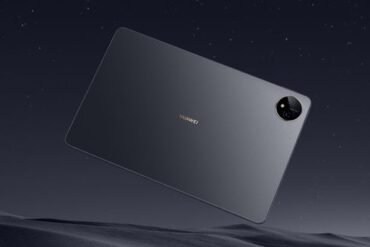Choosing the Right CPU Cooler for Your Processor
Table of Contents
Understanding CPU Cooling: An Introduction
When it comes to keeping your computer’s processor cool, a CPU cooler is an essential component. Whether you’re a gamer, a content creator, or simply use your computer for everyday tasks, understanding CPU cooling is crucial for maintaining optimal performance and preventing overheating.
A CPU (Central Processing Unit) generates a significant amount of heat during operation. Without proper cooling, the temperature can rise rapidly, potentially causing thermal throttling and even permanent damage to the processor. This is where a CPU cooler comes into play.
CPU coolers work by dissipating the heat generated by the processor, allowing it to operate within safe temperature limits. There are two main types of CPU coolers: air coolers and liquid coolers.
Air coolers, as the name suggests, use air to cool the CPU. They consist of a heatsink, which is a metal block with fins, and a fan that blows air over the heatsink. As the air passes through the fins, it absorbs the heat from the processor and carries it away, effectively cooling the CPU.
Liquid coolers, on the other hand, use a liquid coolant to dissipate the heat. They typically consist of a pump, radiator, and fans. The pump circulates the liquid coolant through the CPU block, where it absorbs the heat from the processor. The heated coolant then flows to the radiator, where the fans blow air over it, cooling it down before it returns to the CPU block.
When choosing the right CPU cooler for your processor, several factors must be considered. These include the CPU’s power consumption, overclocking potential, noise tolerance, and case compatibility. Additionally, budget and personal preferences play a role in the decision-making process.
To help you make an informed choice, here are a few key points to remember:
- Air coolers are generally more affordable and easier to install, but may not provide the same level of cooling efficiency as liquid coolers.
- Liquid coolers are often more effective at dissipating heat, especially for high-performance processors or overclocking scenarios. However, they can be more expensive and require additional maintenance.
- Consider the dimensions of the CPU cooler and the available space in your computer case to ensure compatibility.
- Read reviews and consider the noise levels of the CPU cooler, as some fans can be noisy under heavy load.
Understanding CPU cooling is crucial for keeping your processor running smoothly and extending its lifespan. By choosing the right CPU cooler for your needs, you can ensure optimal performance and prevent overheating issues.
Air vs. Liquid Cooling: Pros and Cons
When it comes to keeping your processor cool, there are two main options to choose from: air cooling and liquid cooling. Both methods have their own advantages and disadvantages, and understanding these can help you make an informed decision when selecting a CPU cooler for your system.
Air Cooling:
- Pros:
- Cost-effective: Air coolers are generally more affordable compared to liquid cooling solutions.
- Easy installation: Air coolers are often easier to install, as they do not require any additional components like pumps or radiators.
- Reliability: Air coolers have a longer lifespan and are less prone to failure than liquid coolers.
- Low maintenance: Air coolers typically require minimal maintenance, with occasional dusting being the primary task.
- Compatibility: Air coolers are compatible with most computer cases and do not require specific mounting points.
- Cons:
- Less efficient cooling: Air coolers may have limitations when it comes to dissipating heat, especially for high-performance processors.
- Noisier operation: Some air coolers can produce more noise compared to liquid coolers, especially under heavy load.
- Bulky size: Air coolers tend to be larger and heavier, which can limit compatibility with smaller cases or systems with limited space.
Liquid Cooling:
- Pros:
- Enhanced cooling performance: Liquid cooling systems can provide superior heat dissipation, making them ideal for overclocking or high-end processors.
- Quiet operation: Liquid coolers generally produce less noise, as the fans are not directly attached to the CPU.
- Compact design: Liquid coolers are often smaller and more compact, allowing for easier installation in tight spaces.
- Customization options: Liquid cooling systems offer more customization options, such as colored coolant and RGB lighting.
- Cons:
- Higher cost: Liquid cooling solutions tend to be more expensive compared to air coolers.
- Complex installation: Liquid coolers require additional components like pumps, radiators, and tubing, making the installation process more complex.
- Potential leakage: While rare, liquid coolers have a small risk of leakage, which could damage other components if not properly maintained.
- Regular maintenance: Liquid cooling systems need periodic maintenance, such as refilling coolant and checking for any leaks.
Ultimately, the choice between air and liquid cooling depends on your specific needs and budget. If you prioritize affordability, ease of installation, and reliability, air cooling may be the best option for you. On the other hand, if you require maximum cooling performance, quieter operation, and are willing to invest in a more complex setup, liquid cooling could be the way to go.
Considerations for CPU Cooler Size
When it comes to choosing the right CPU cooler for your processor, one of the most important factors to consider is the size of the cooler. The size of the cooler can have a significant impact on its performance and compatibility with your computer case. Here are some considerations for CPU cooler size:
- Compatibility: Before purchasing a CPU cooler, it is crucial to check if it is compatible with your computer case. Some cases have specific size limitations, and it is important to ensure that the cooler you choose will fit properly.
- TDP Rating: The Thermal Design Power (TDP) rating of your processor should also be taken into account. TDP represents the amount of heat generated by the CPU, and a higher TDP requires a larger cooler to effectively dissipate the heat. Make sure to choose a cooler that can handle the TDP of your processor.
- Heat Sink Size: The size of the heat sink is another important consideration. A larger heat sink usually means more surface area for dissipating heat, resulting in better cooling performance. However, it is essential to ensure that the heat sink will fit within your case without obstructing other components.
- Fan Size: The size of the fan on the CPU cooler can also impact its cooling performance. Larger fans generally move more air, leading to better heat dissipation. However, it is important to consider the available space in your case for the fan and ensure that it does not interfere with other components.
- Noise Level: It is worth noting that larger coolers with bigger fans may produce more noise due to increased airflow. If noise is a concern for you, consider choosing a cooler with a smaller fan or one that has noise-reducing features.
Overall, selecting the right CPU cooler size is essential for optimal cooling performance and system compatibility. By considering factors such as compatibility, TDP rating, heat sink size, fan size, and noise level, you can ensure that your processor stays cool and performs efficiently.
Performance and Noise Levels: Finding the Balance
When choosing a CPU cooler for your processor, it’s important to find the right balance between performance and noise levels. While cooling is essential to maintain optimal CPU performance, the noise generated by the cooler can sometimes be a nuisance. Here are a few key factors to consider when selecting a CPU cooler that offers both effective cooling and minimal noise:
- Cooling Performance: The primary function of a CPU cooler is to dissipate the heat generated by the processor. Look for coolers with high thermal conductivity and efficient heat dissipation capabilities. Heat pipes and large heatsinks with multiple fins can aid in effective heat transfer.
- Fan Size and Speed: The size and speed of the fan on your CPU cooler can significantly impact both cooling performance and noise levels. Larger fans tend to move more air at lower speeds, resulting in quieter operation. Look for CPU coolers with larger fan sizes, such as 120mm or 140mm, for improved cooling efficiency with reduced noise.
- Noise Level Rating: Manufacturers often provide noise level ratings for their CPU coolers. These ratings are typically measured in decibels (dB). Lower dB ratings indicate quieter operation. Consider coolers with noise levels below 30dB for a near-silent computing experience.
- Fan Control Options: Some CPU coolers offer fan control options that allow you to adjust the fan speed manually or automatically based on CPU temperature. This feature can help you strike the right balance between cooling performance and noise levels, as you can reduce fan speed when the CPU is not under heavy load.
- Build Quality and Design: A well-built CPU cooler with high-quality materials and sturdy construction can help minimize vibrations and noise. Additionally, coolers with thoughtful design features like rubber dampeners and anti-vibration pads can further reduce noise levels.
By considering these factors, you can select a CPU cooler that offers efficient cooling while keeping noise levels to a minimum. Remember to check compatibility with your processor socket and case dimensions to ensure a proper fit. With the right CPU cooler, you can achieve the perfect balance between performance and noise levels, ensuring a smooth and silent computing experience.
Budget-Friendly CPU Cooling Solutions
When it comes to choosing a CPU cooler for your processor, it’s essential to consider both performance and cost. While high-end cooling solutions can provide excellent thermal management, they often come with a hefty price tag. However, there are several budget-friendly options available that can still effectively cool your CPU. Here are some affordable CPU cooling solutions to consider:
- Air Coolers: Air coolers are the most common and cost-effective cooling solutions. They consist of a heatsink and a fan that dissipate heat from the CPU. These coolers come in various sizes and designs, and many offer excellent cooling performance at an affordable price.
- Stock Coolers: Most CPUs come bundled with a stock cooler, which is a basic cooling solution provided by the manufacturer. While stock coolers might not offer the same level of performance as aftermarket options, they are typically sufficient for basic usage and light gaming.
- All-in-One (AIO) Liquid Coolers: AIO liquid coolers are an affordable alternative to custom liquid cooling setups. They consist of a pre-filled radiator, pump, and fan(s). AIO coolers are relatively easy to install and provide better cooling performance than air coolers, making them a popular choice for budget-conscious users.
- Compact Coolers: Compact coolers are small-sized CPU coolers that are suitable for compact PC builds or cases with limited space. These coolers often utilize low-profile designs and still offer decent cooling performance while being cost-effective.
When choosing a budget-friendly CPU cooler, it’s crucial to consider factors like your CPU’s thermal requirements, your PC’s case size, and your budget. It’s also worth checking online reviews and comparisons to find the best-performing cooler within your price range. Remember that proper installation and adequate airflow within your PC case will also contribute to the overall cooling efficiency of your CPU cooler.
By considering these budget-friendly CPU cooling solutions, you can find an affordable option that meets your performance needs while keeping your processor cool and running optimally.

























